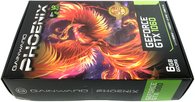 With the GeForce GTX 1060 Phoenix GS, Gainward is more aimed at the more demanding user, but without getting lost in the extensive overclocking craze.
With the GeForce GTX 1060 Phoenix GS, Gainward is more aimed at the more demanding user, but without getting lost in the extensive overclocking craze.
As a kind of "luxury label" from Palit, one naturally also resorts to the company's own resources and so it is hardly surprising that the card is not only visually very similar except for the cover of the Super Jetstream.
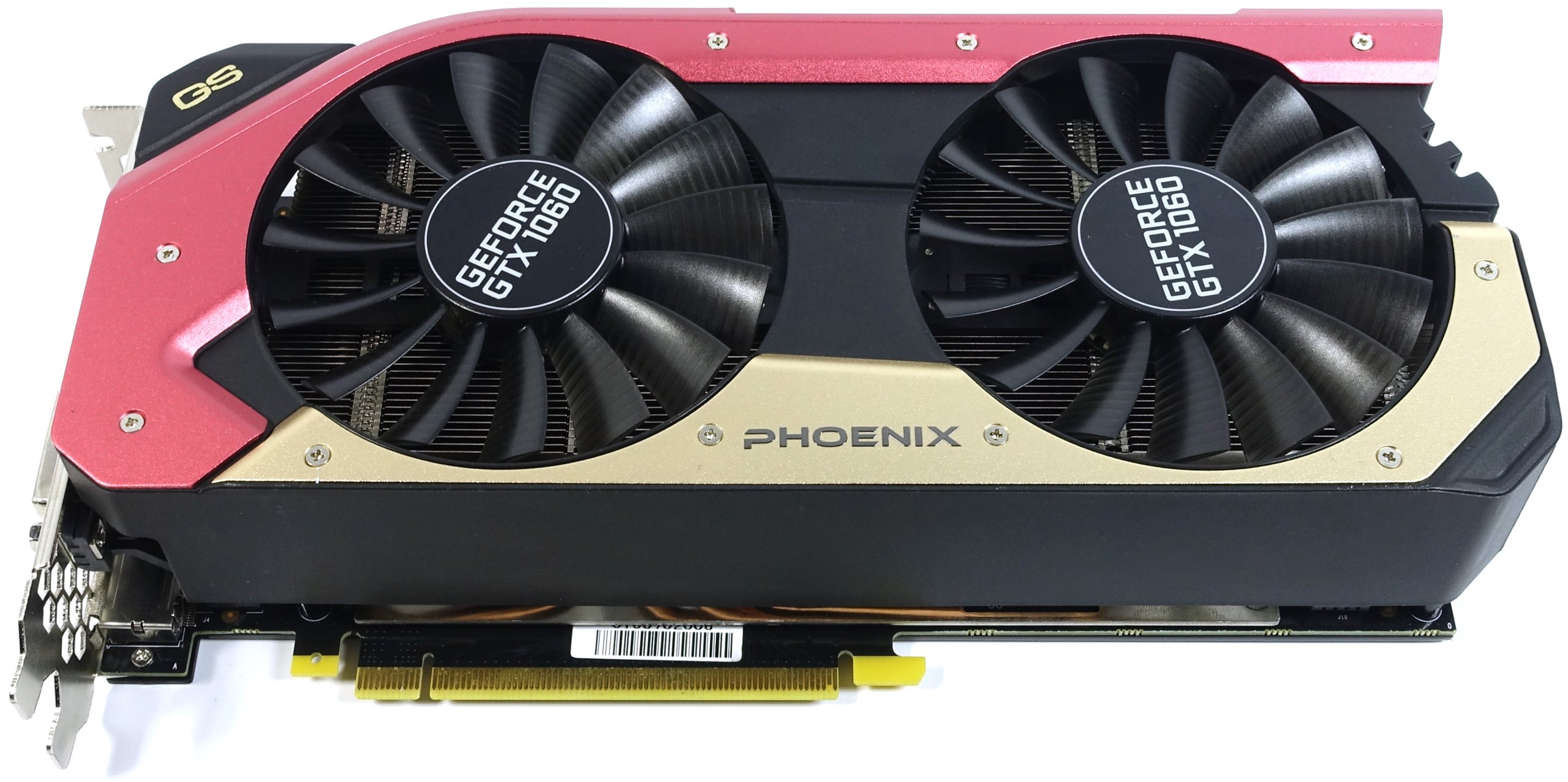
With the Golden Sample (GS), Gainward, as always, marks the top rung on the in-house performance ladder for the cards with a specific chip. We are curious to see how Gainward (or Palit) now has the balance between efficiency, increased performance and workmanship with the GeForce GTX 1060.
External structure and connections
The radiator cover is made entirely of black plastic as well as various metal applications and is designed as an extra attachment, including the fan modules. Thus, by loosening only four screws, a Palit card could be transformed into a gainward and vice versa – so much for the topic of modular system.
The card weighs a moderate 875 grams and is also very compact. It measures only 24 cm in length, is 11.7 cm high and at least a proud 4.7 cm deep (installation dimensions) and thus effectively occupies three slots, which makes it rather difficult to install in smaller ITX systems.
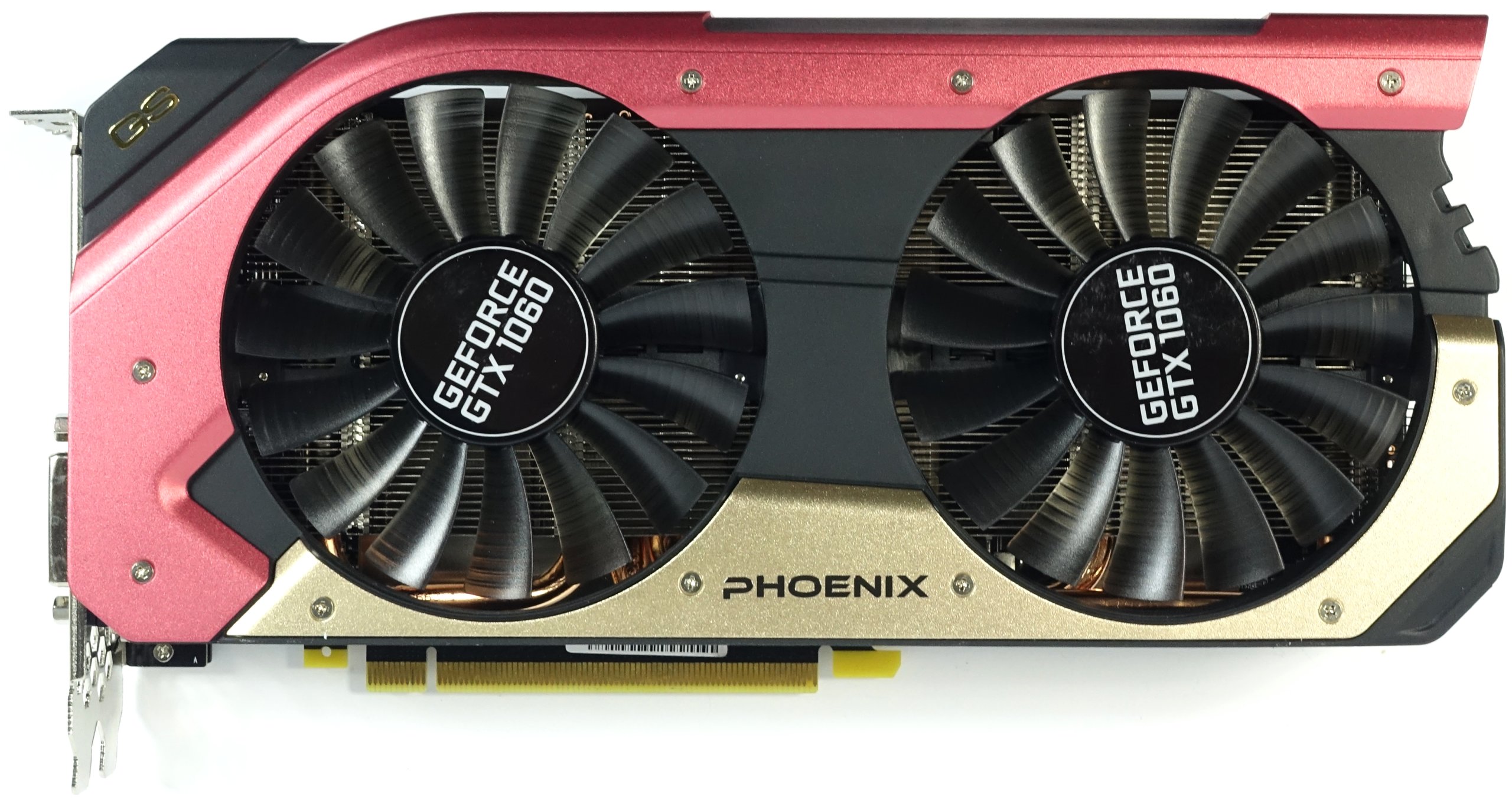 |
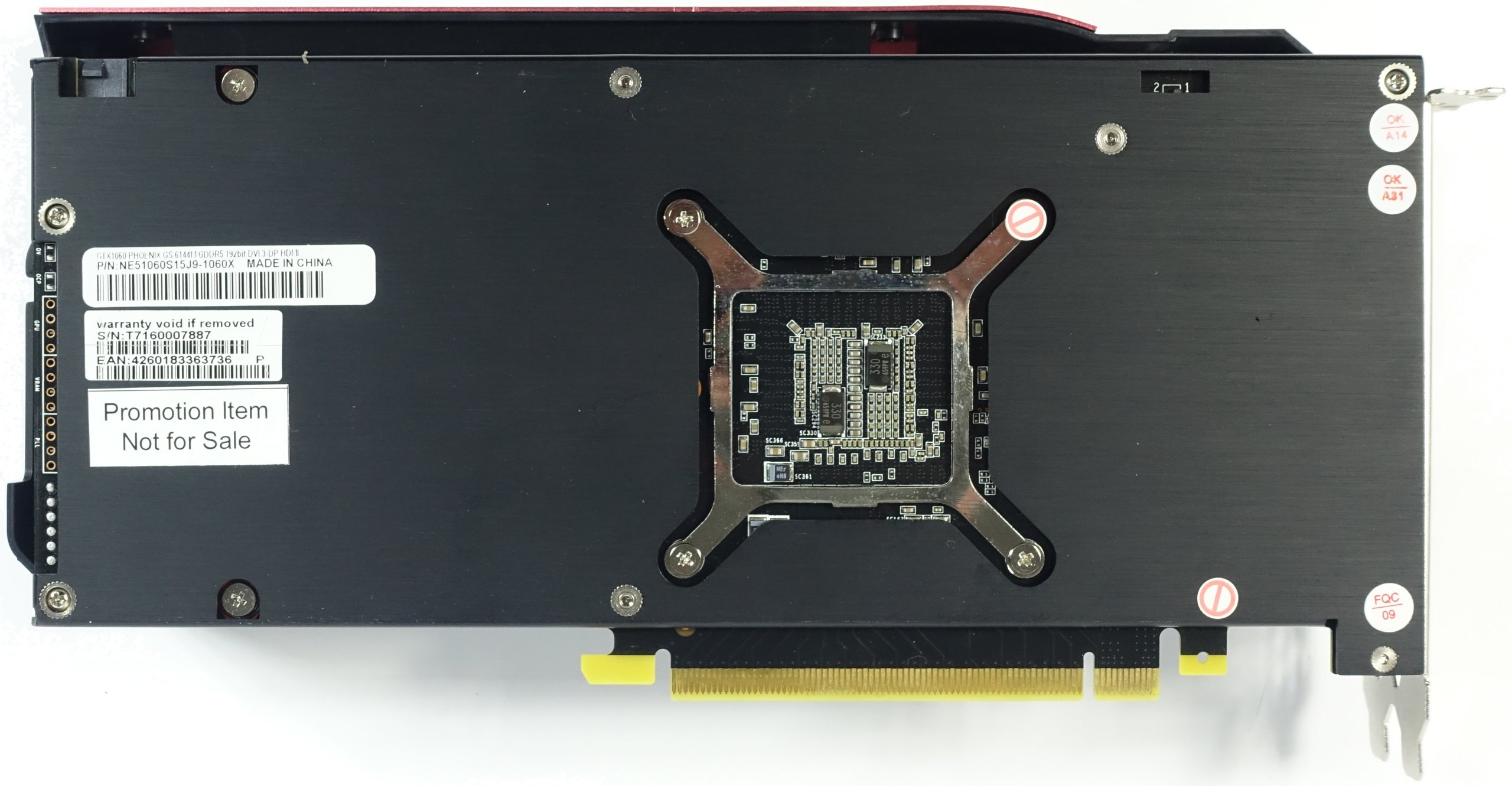 |
The back of the board is covered by a one-piece backplate, which has no ventilation openings and no cooling function. With this backplate, you have to plan another five millimeters depth on the back and take care, especially with ITX systems, that nothing conflicts between the CPU cooler and the card.

The top of the card bears the backlit Gainward lettering as a controllable RGB LED version. The only 6-pin PCIe power supply connection sits 180° rotated at the end of the card, which makes technical sense, since you don't have to shorten the cooling fins any further.
A closer look at the heatpipes on the ground shows us that they are not embedded in a radiator block or the heat spreader, but only lie flat behind the base plate. We will be asked whether and how this very cost-effective variant will prove its worth.

The horizontal slat alignment ensures that a not inconsiderable part of the waste heat is carried out of the housing via the very air permeable slot aperture thanks to the many honeycomb-shaped openings. You can see this principle of air flow at the end of the map, but here the air lands in the middle of the housing, which makes a good airflow all the more important.
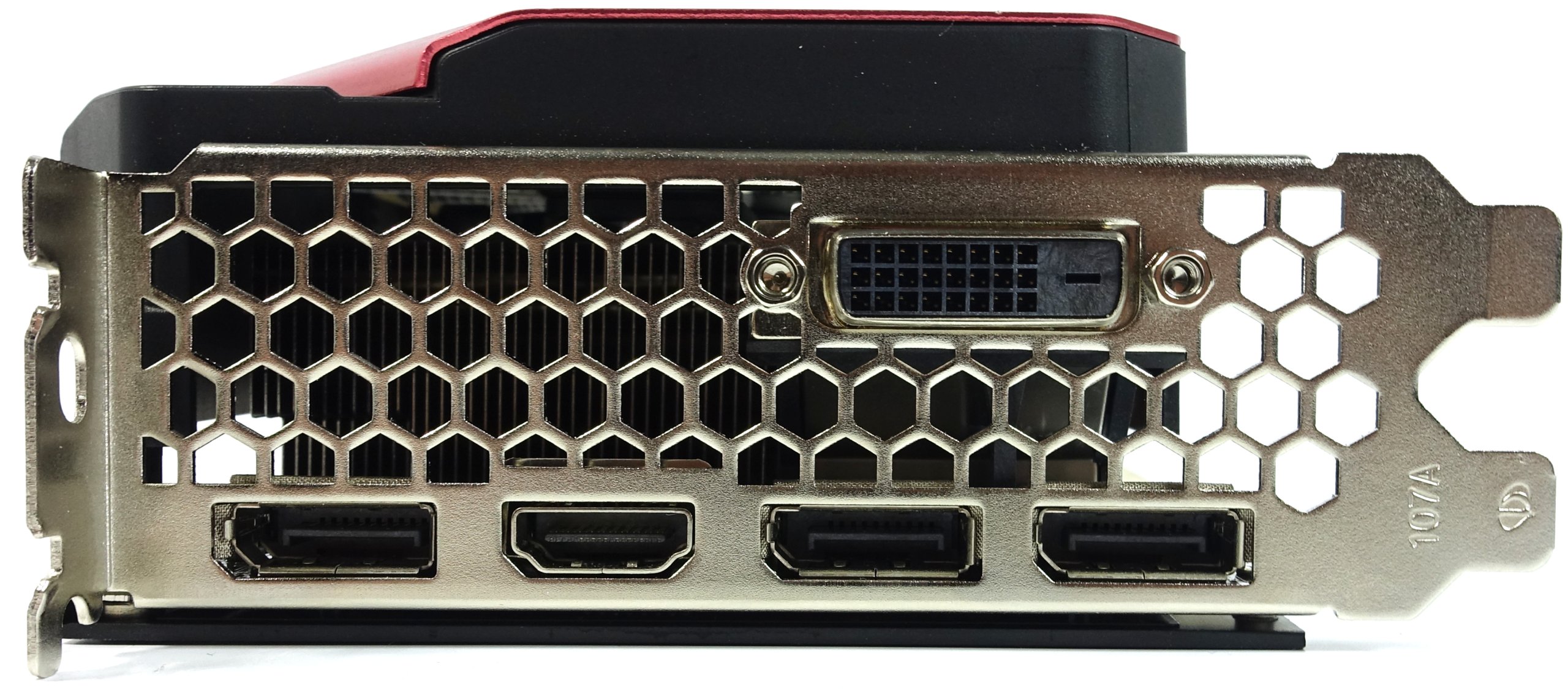 |
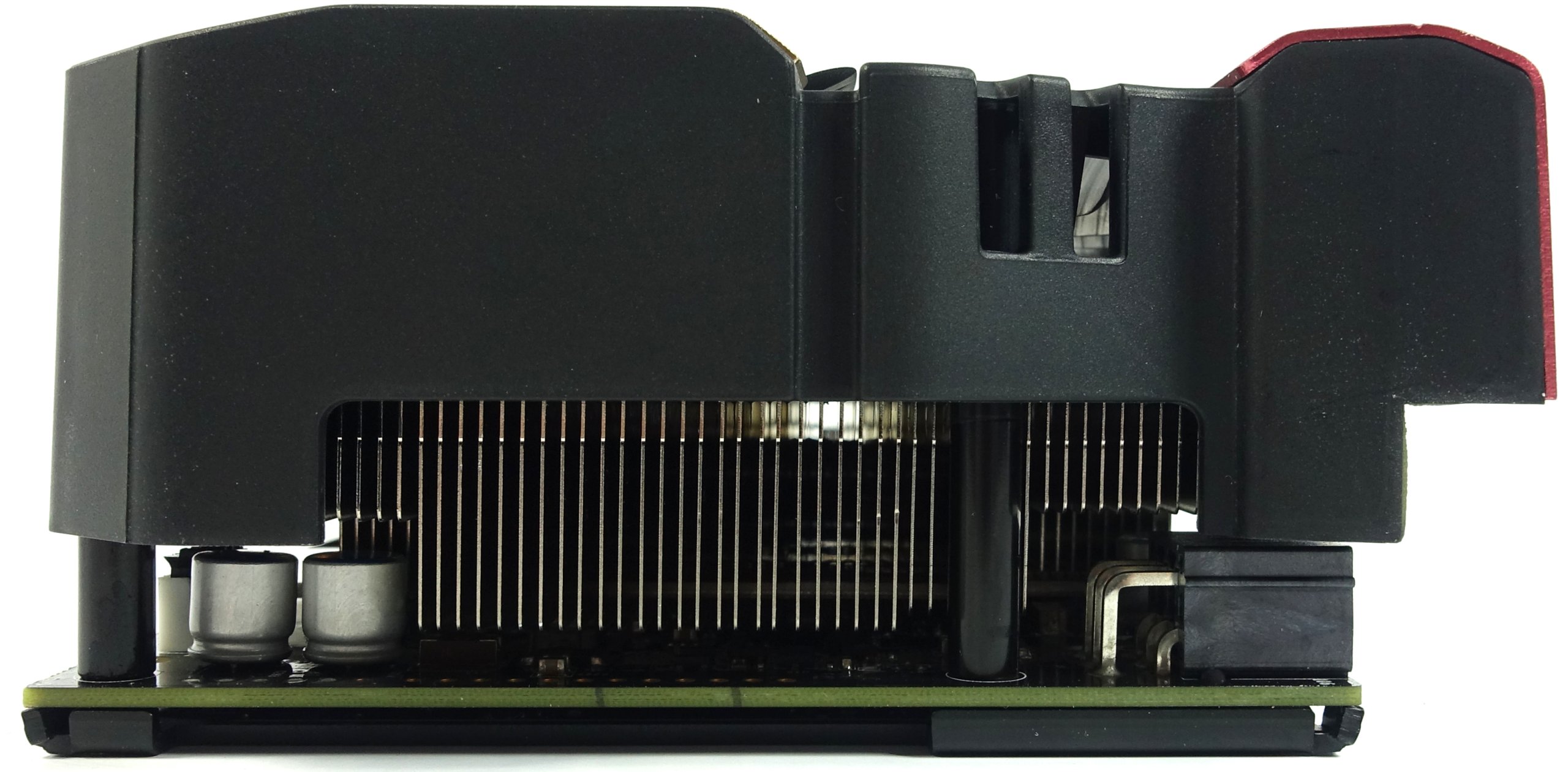 |
The slot aperture carries the usual five outputs, a maximum of four of which can be used together as part of a multi-monitor setup. In addition to the dual-link DVI-D (an analog signal is not looped through), there is an HDMI 2.0 output and three DisplayPort 1.4 ports on the back.
Board and assembly
Let's take a closer look at the board used by Palit and Gainward, which has some distinctive features in direct comparison to Nvidia's reference and most board partner cards.
First, we'll see a total of four phases, three of which are mapped to the GPU and one to memory. Two of the three GPU phases are fed from the PCIe port, the third and the memory phase from the motherboard slot.
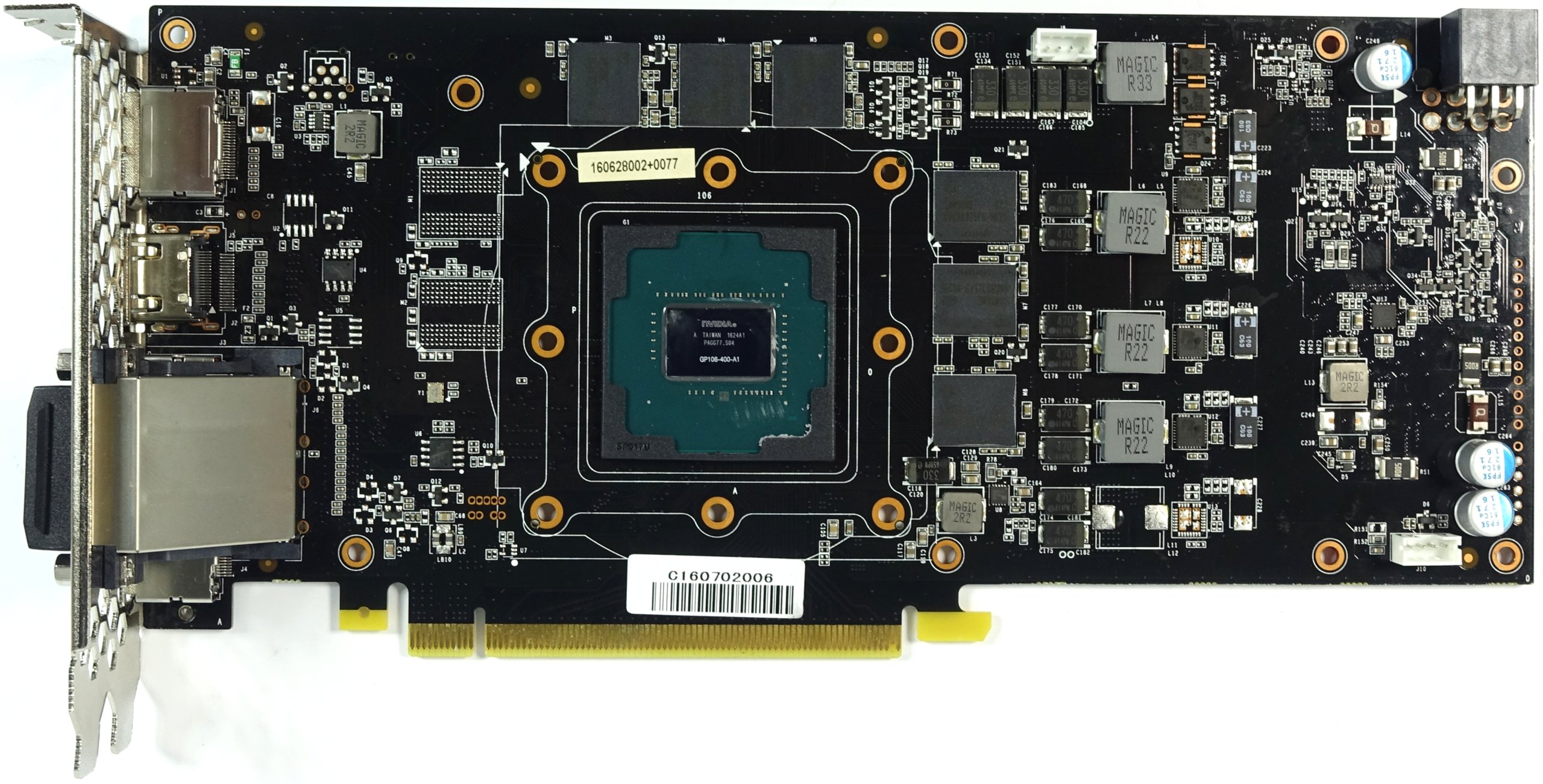
Although the motherboard would offer the theoretical possibility to use a phase more, Gainward relies on a rather rarely used and also quite inexpensive NCP81174 from ON Semiconductor, which can only control a maximum of four phases in the PWM controller. The still free connection option could therefore only be used for another, parallel running converter train (doubling).
The three GPU phases rely on a more integrated Vishay SiC632 that combines the gate driver, high and low-side MOSFET and the Schottky diode in one package.
Only in memory, one then relies conventionally on a pair of N-Channel MOSFETS, consisting of an SM4503NHKP (30A, high-side) and an SM4377NSKP (50A, low-side) from Sinopower, which are also more likely to be located on the favorable edge.
Overall, you can already tell the board that you haven't put the last penny into expensive components, especially since smoothing solids are sown quite rare. Foxconn's Magic Chokes are good middle-class and also perform their service in a very unobtrusive way.
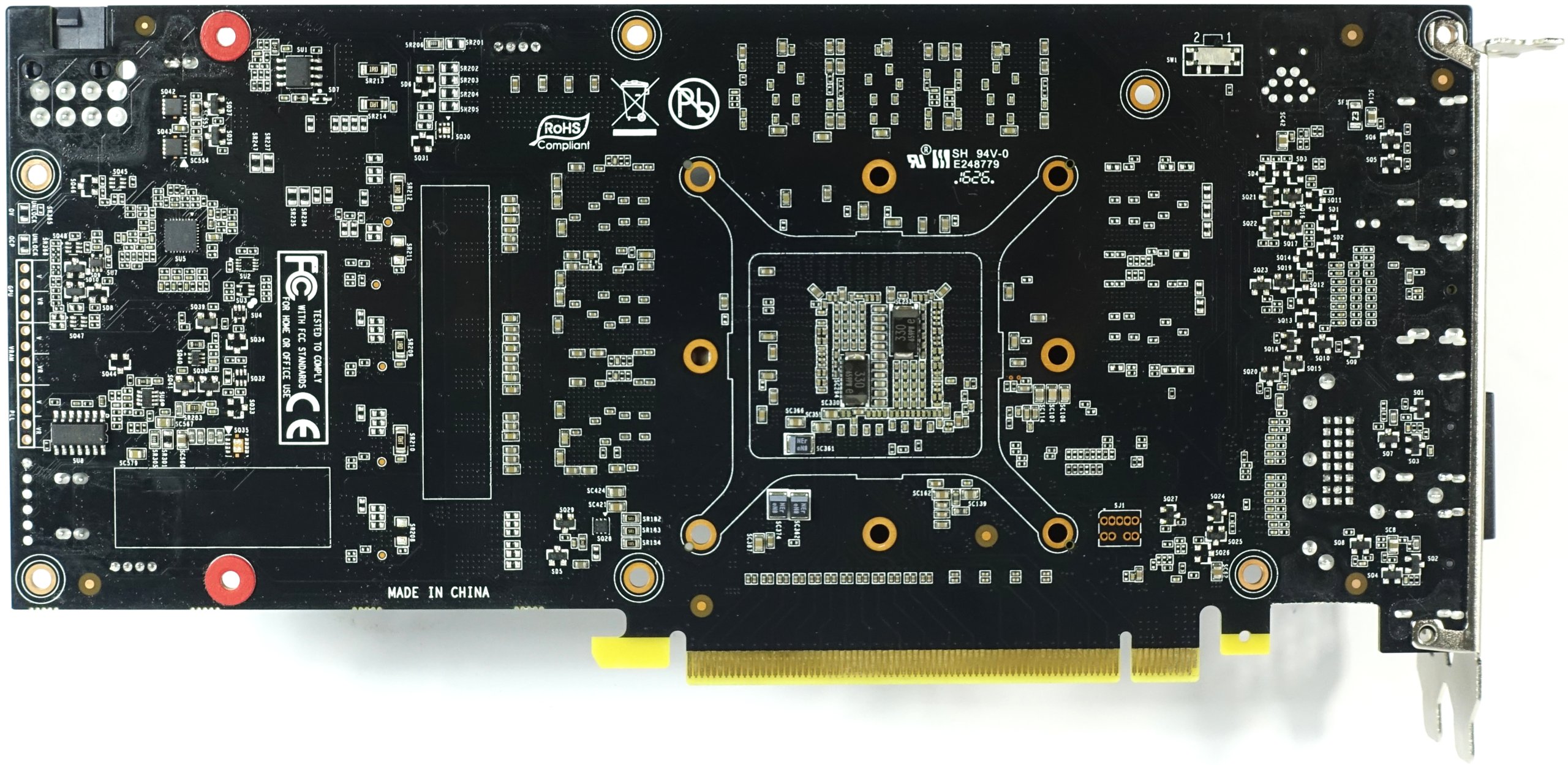
Below the GPU, two more capacitors are soldered to intercept and smooth voltage peaks – exactly the same principle as Nvidia's Refrenz.
We note that only six of the eight existing memory fields are modules on this map. These are Samsung modules of the type K4G80325FB-HC25, each with a capacity of eight gigabit (32x 256 MBit) and can be operated with voltages between 1,305 and 1,597 volts, depending on the required clock. In total, this results in a total memory of six gigabytes.
Clock rates, voltages and power consumption
Of course, the course of boost clock and adjacent GPU core voltage as well as the connection between clock frequency and voltage are also interesting, whereby the clock curve breaks down quite significantly during gaming and when the card is fully warmed up.
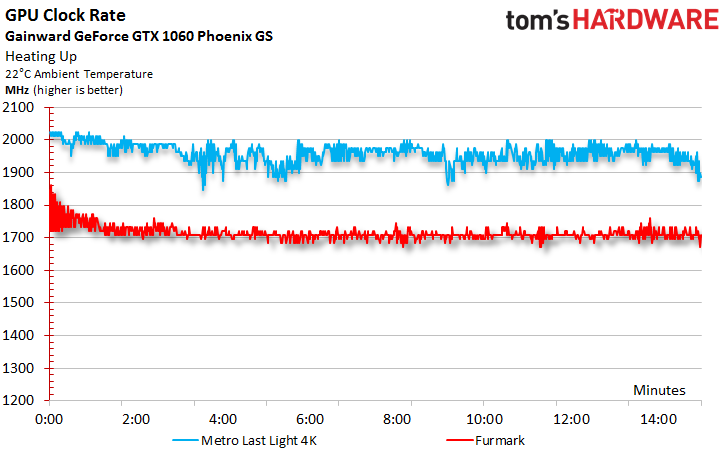
While the initial 2025 MHz boost clock falls to an acceptable 1949 MHz on average after heating and under load (frequent fluctuations up and down included), the measured voltage values are quite similar: on average, 0.975 volts are between 1.025 and 0.9 volts.
The reason is the intervention of Boost 3.0 and the rather low-set Power Target, which limits the power consumption to 130 watts and below.
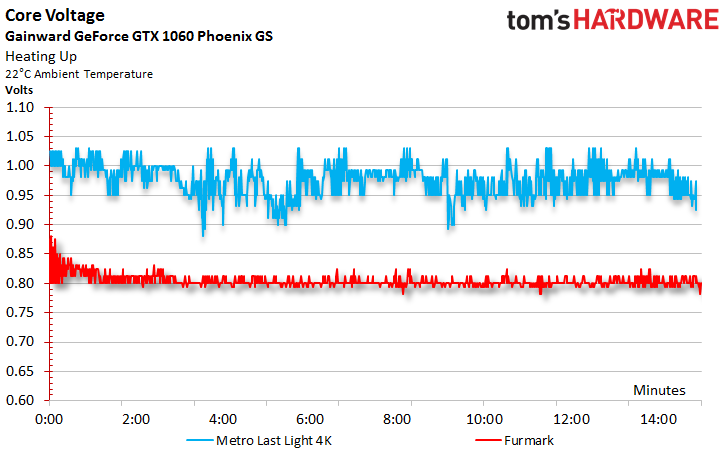
These voltage curves and the flowing currents result in the already mentioned power consumption, which we can measure very well with our exact equipment at all connections.
The lowest GPU clock speed for idle measurement is approx. 253 MHz. We worked with a variable low-pass filter for the measurements, so that we only mention possible, very short load peaks on the margins (greyed out bar), because they are hardly relevant in practice and have also irritated many readers.
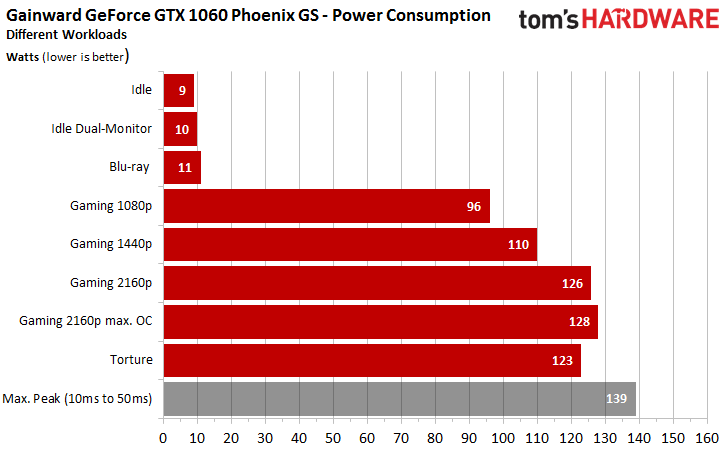
It is also the low Power Target that allows the stress test Boost 3.0 to cap the voltages to such an extent that the power consumption is even slightly lower than in gaming, if you start the worst case there.
Loading of the power supply connections
Now we look at the division of the loads at maximum gaming load and the stress test: Since the 3.3V motherboard connection is not used at all, we have dispensed with this voltage rail in the diagrams.
The division of the four phases between the respective supply connections is completely uncritical, but also leaves no greater room for overclocking tests according to the standards – but these are anyway provided by the BIOS (Power Target and Voltage Specification) braked:
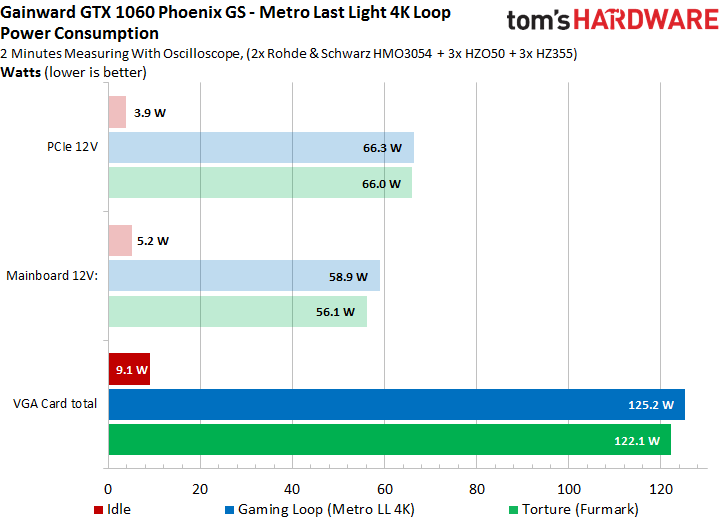
Here's another clickable diagram with the respective history curves for gaming and stress testing:
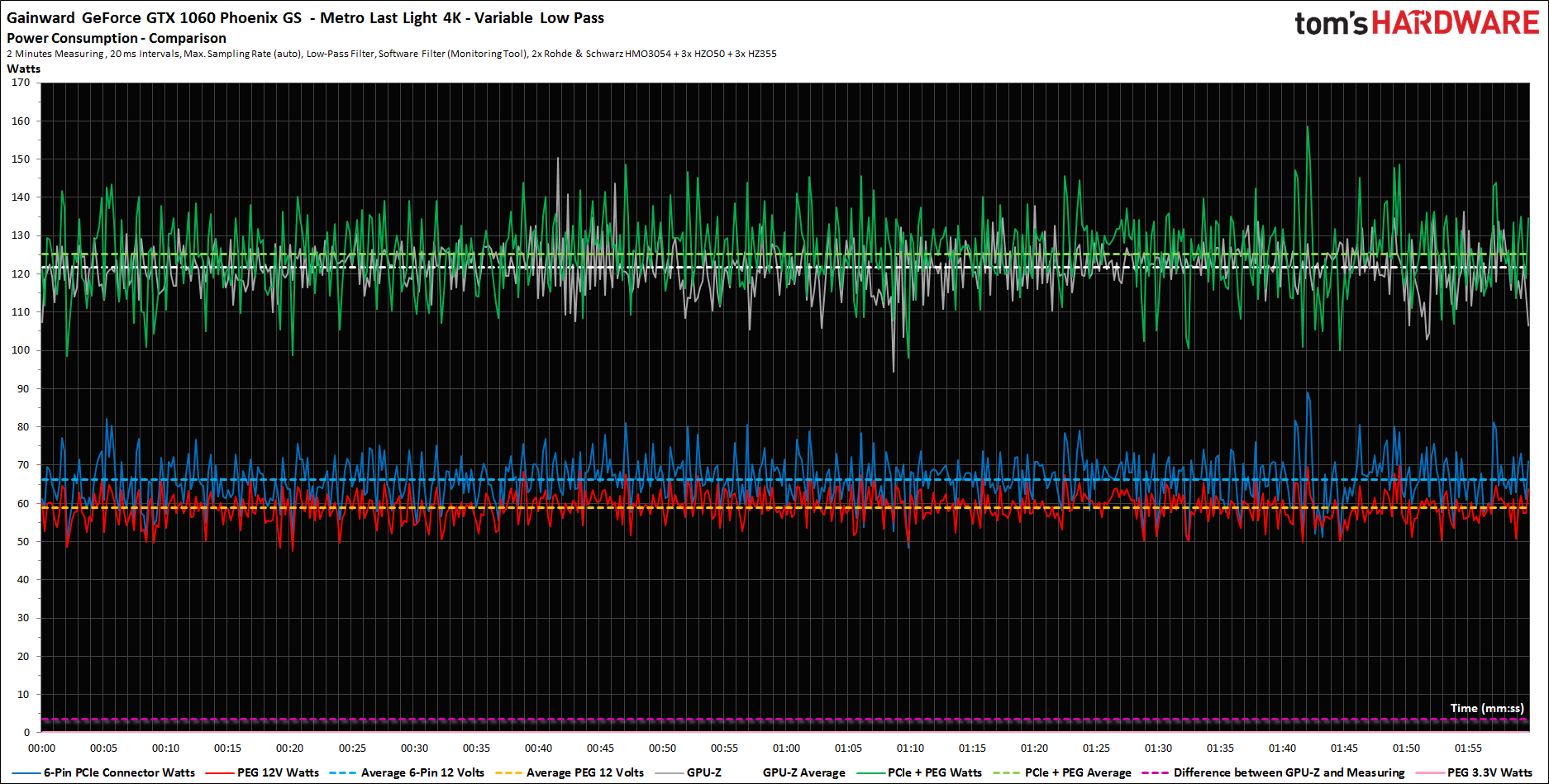 |
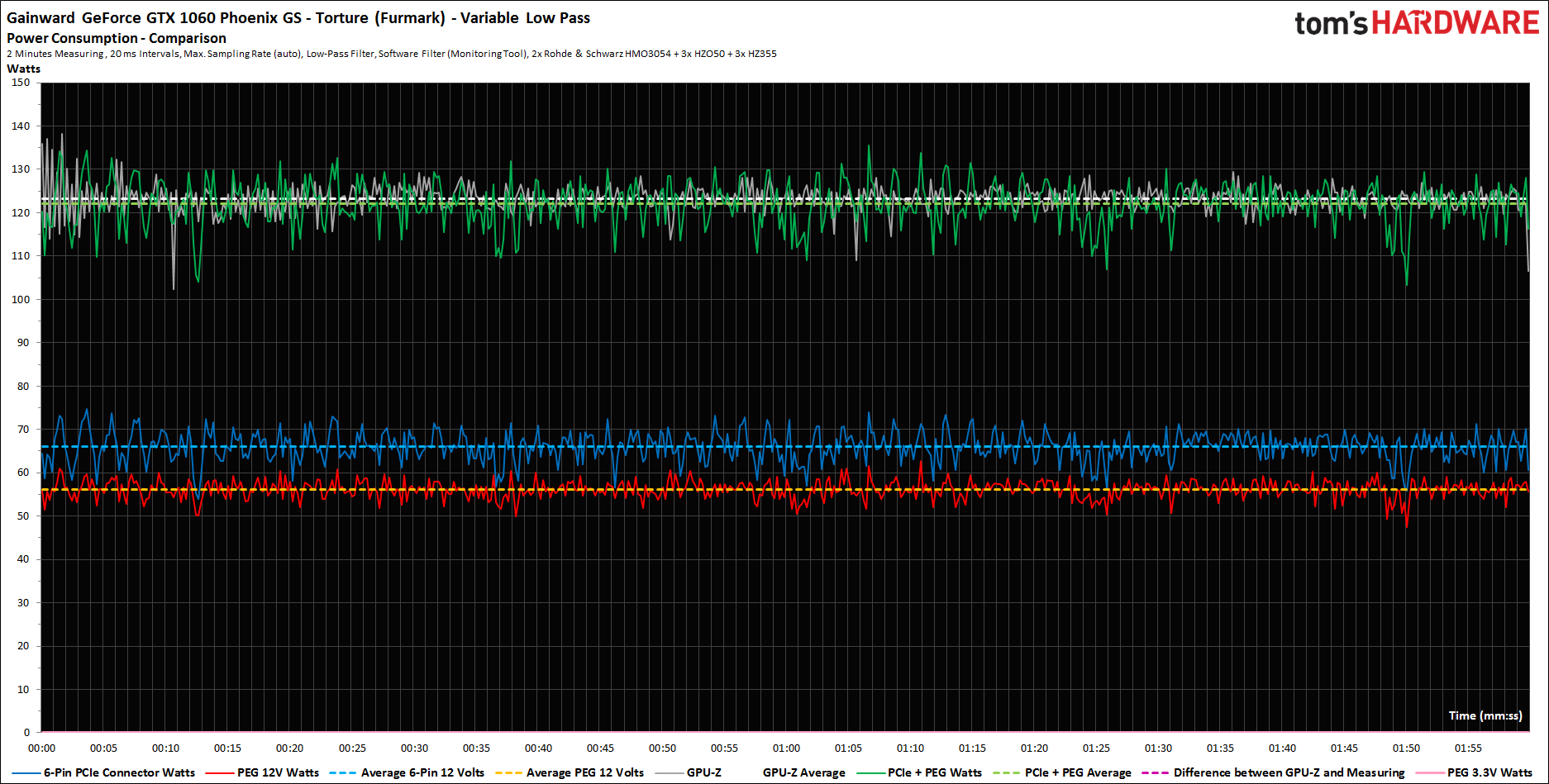 |
Since the standards (PCI SIG) refer only to the flowing currents, we now look at the following diagrams, because the power consumption is only half the rent. With just under five amperes on the motherboard slot, however, you are on the safe side (PCI-SIG standard: max. 5.5 amperes):
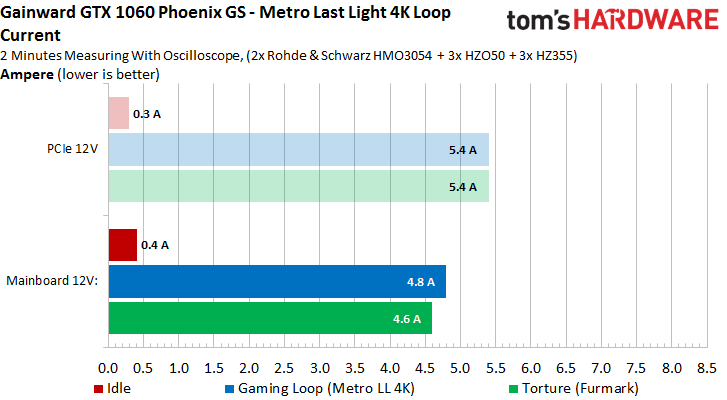
Of course, there are still clear large screens for the measured currents:
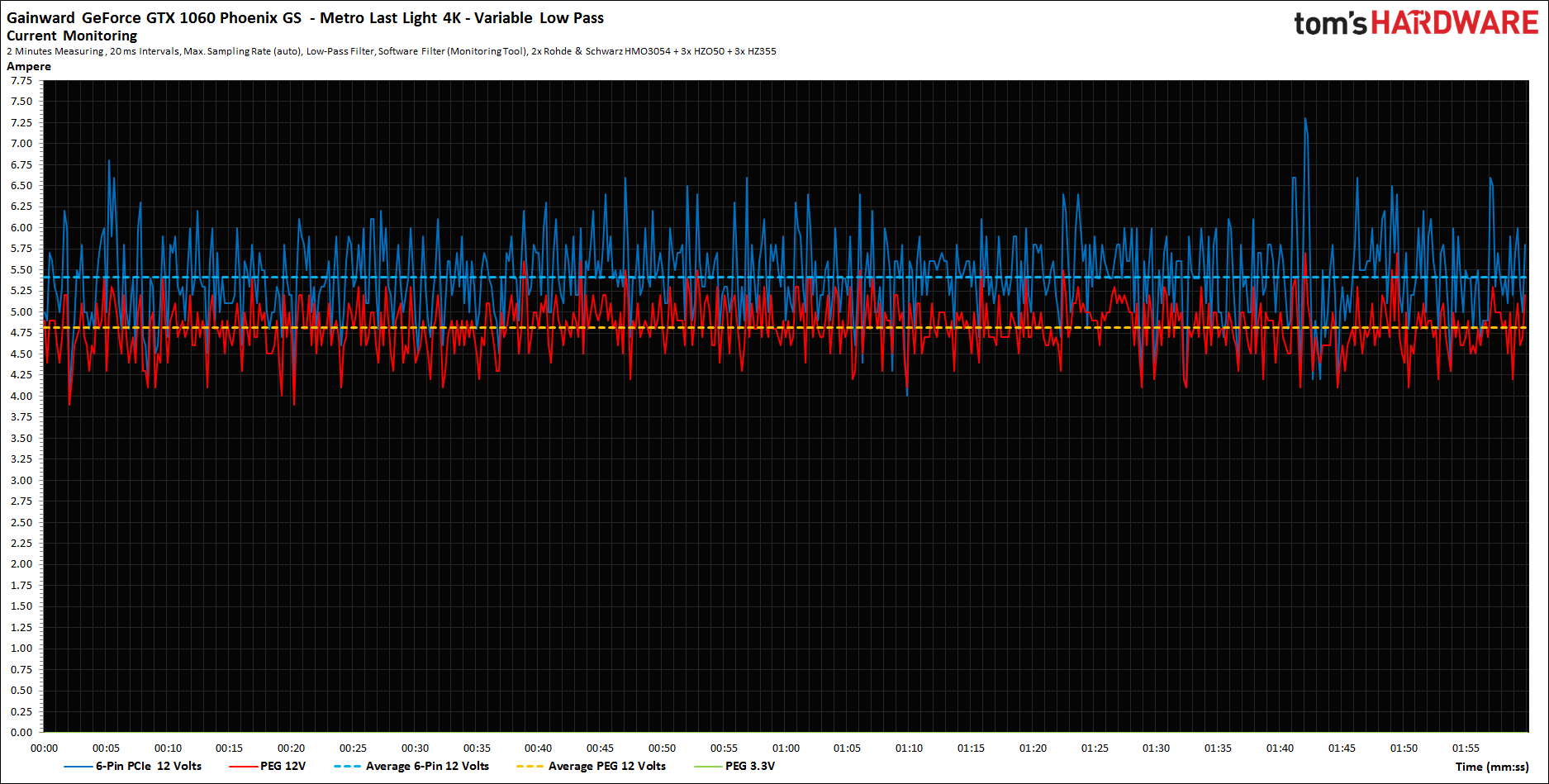 |
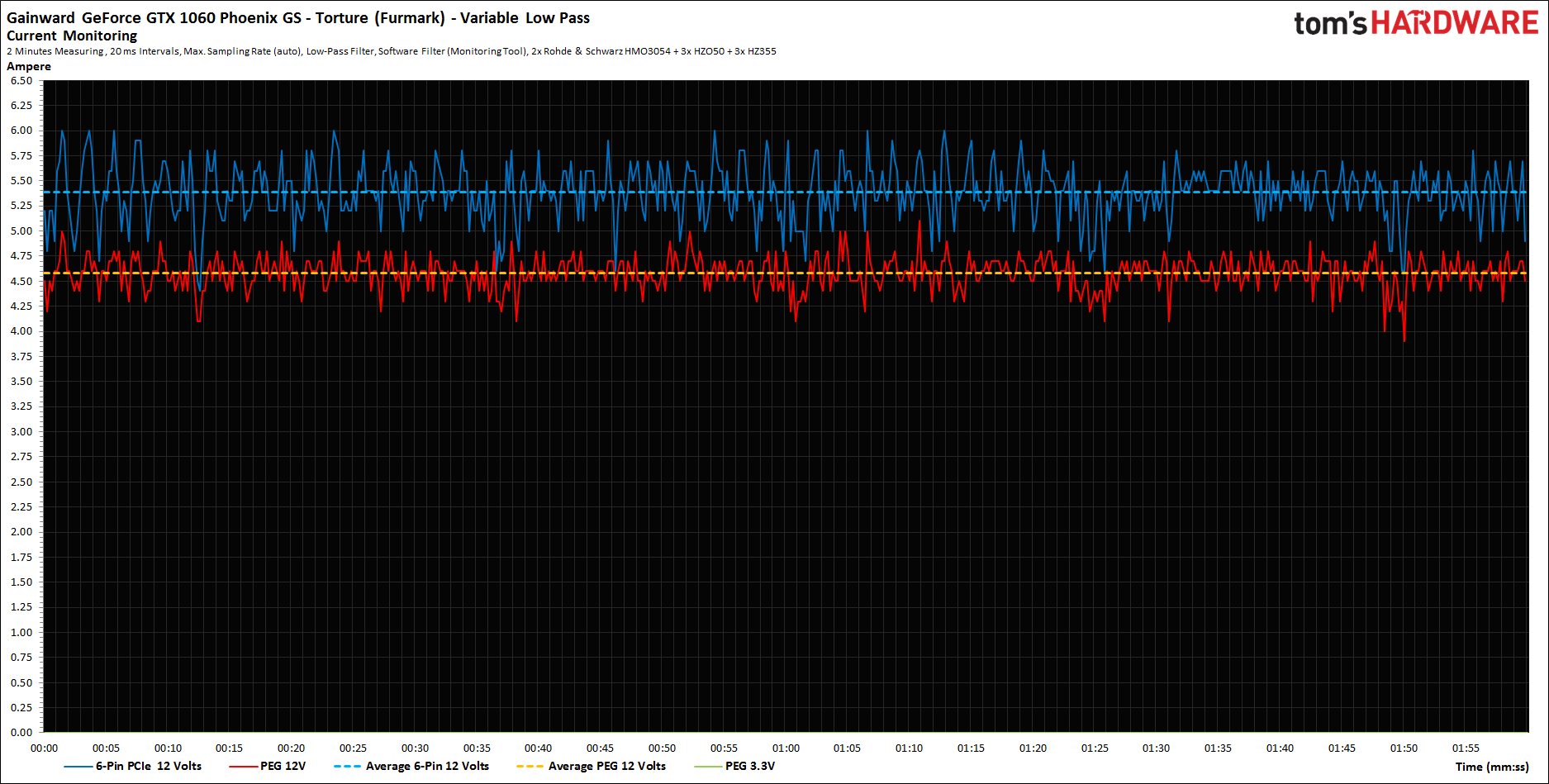 |
Cooling system and temperatures
Now we come to the cooler, which has some peculiarities, but is identical for Palit and Gainward. The backplate, which is not relevant for cooling, is purely optical in nature and is secured from the top of the board with four screws against overly curious customers.
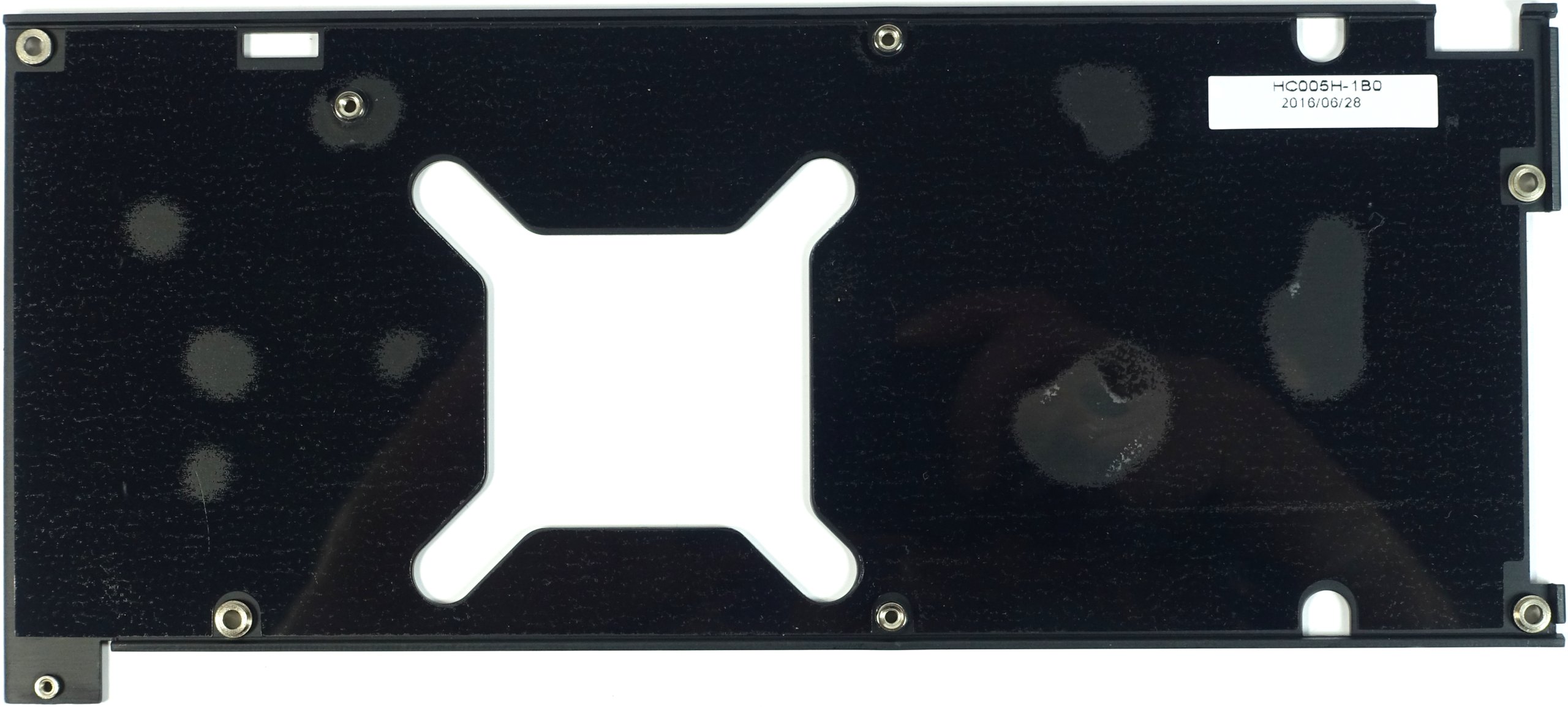
The already mentioned cover has a slightly different look at Gainward and Palit, but the rest is identical – at least except for the different blade geometry of the 9 cm rotor blades, which at Gainward at the edges are conventionally straight.
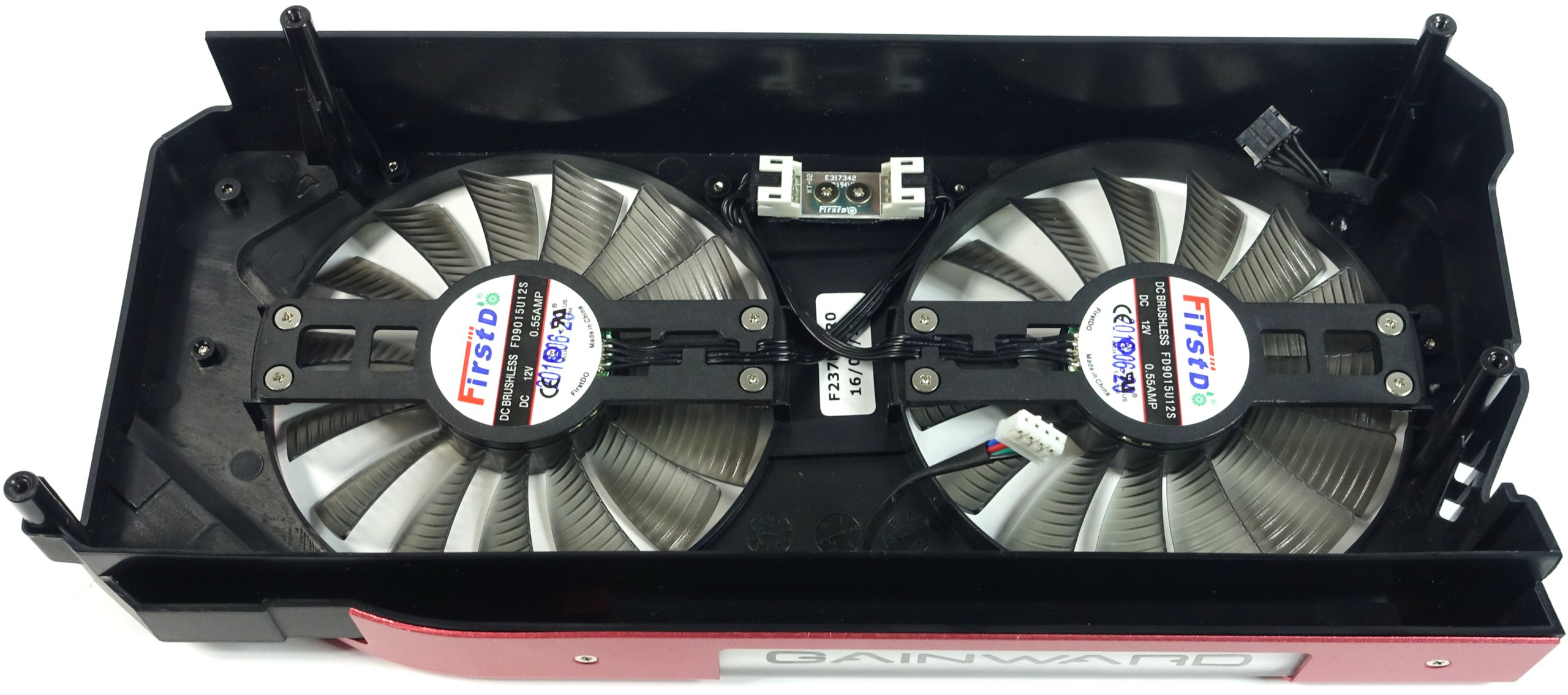
As already mentioned, the rather filigree-looking cooler has horizontally aligned fins as well as four angled 4 mm heatpipes made of sintered composite material. However, the latter are not massively laid in the radiator floor, but lie only at the back on the rather thin base plate. Expensive copper is just as bad an indication here as a heat sink that is at least massively filled.
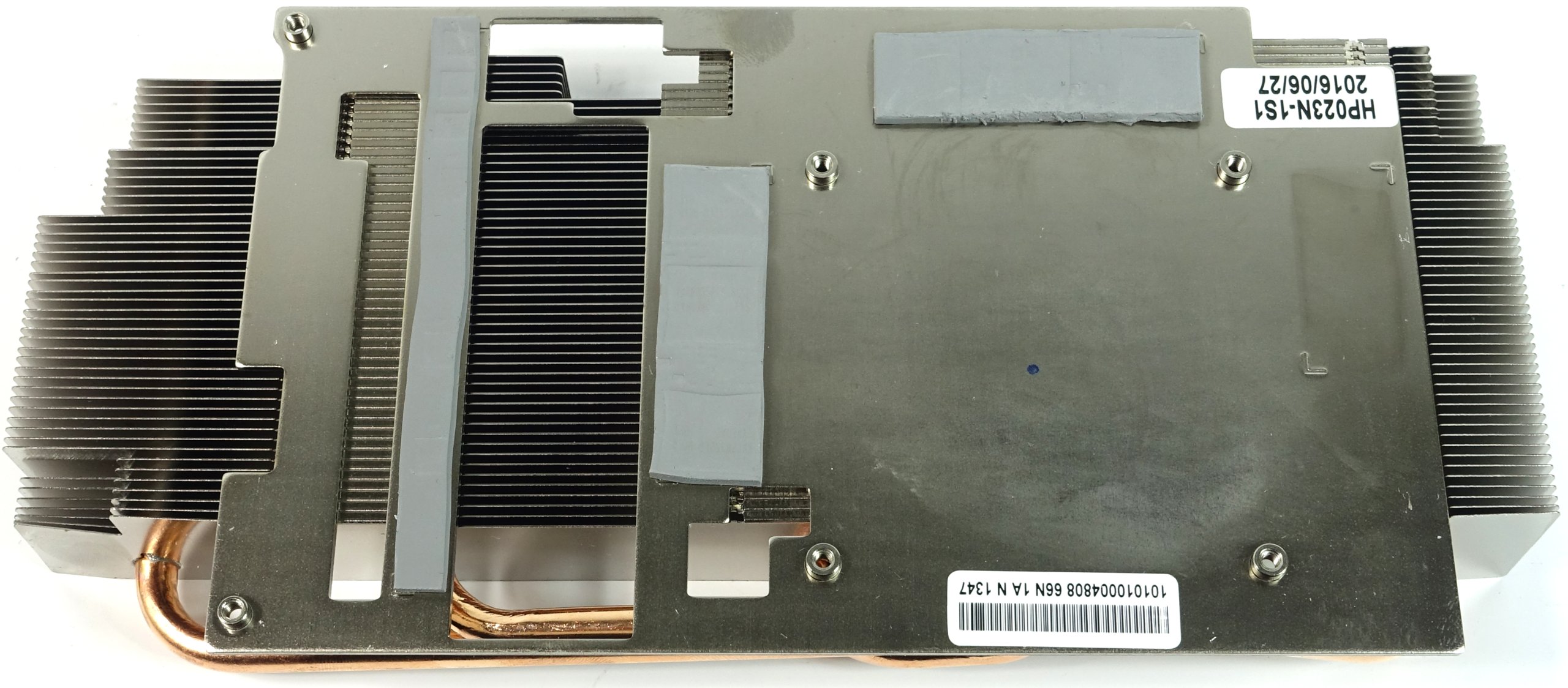 |
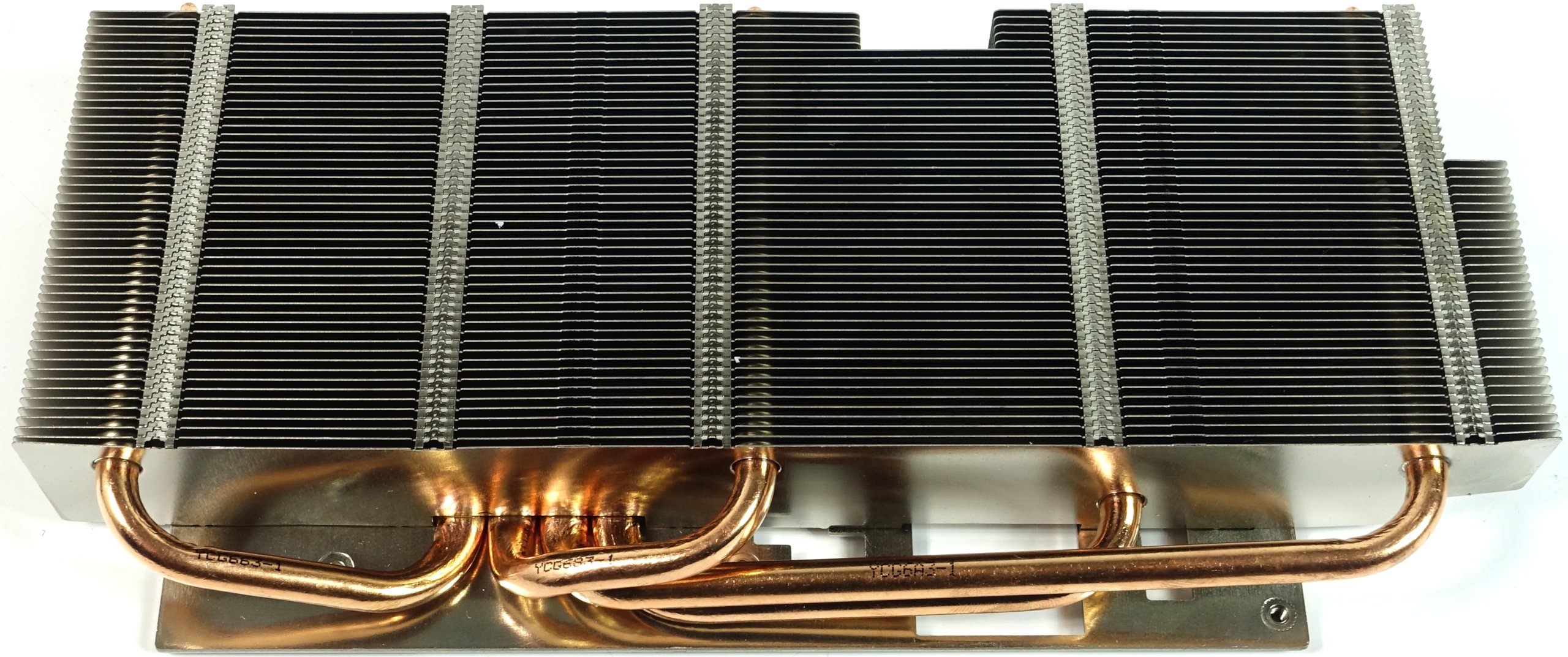 |
The area incorporated into the base plate for the voltage converter MOSFETs can be liked, but the coils have to do without active cooling.
With the 69 to 70°C on the Gaming Loop (closed casing maximum 75°C), the cooler performs its service acceptable, but could perform better if it weren't for the easy installation of the heatpipes. The stress test then reveals a very similar picture.
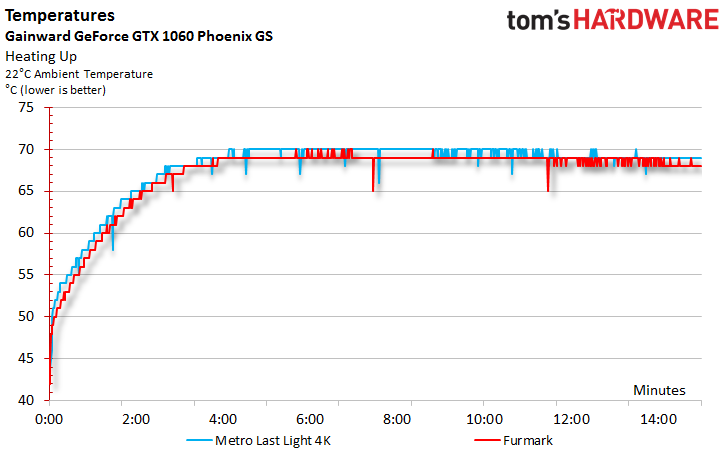
The measurements with the removed backplate show an acceptable result, whereby the maximum achieved approx. 83°C in the case of the voltage converters.
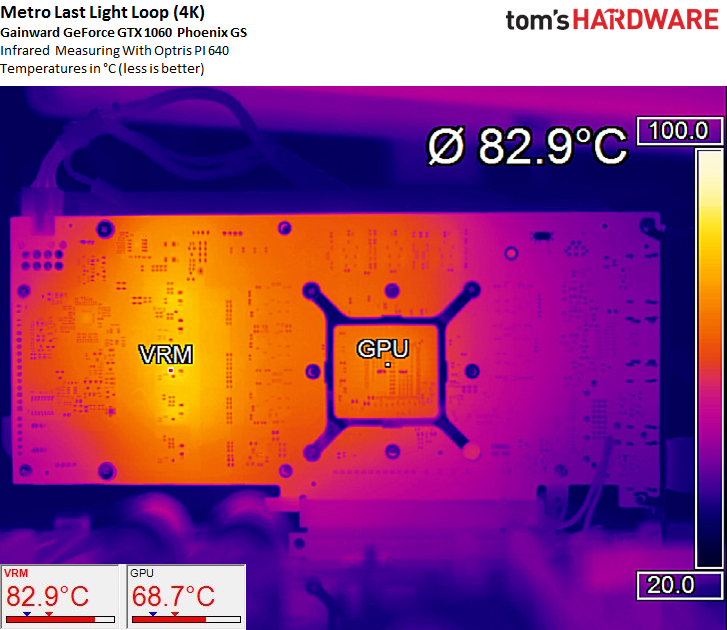
The almost 89°C in the stress test are also still in the green area, but also show the weak points of the cooler mercilessly.
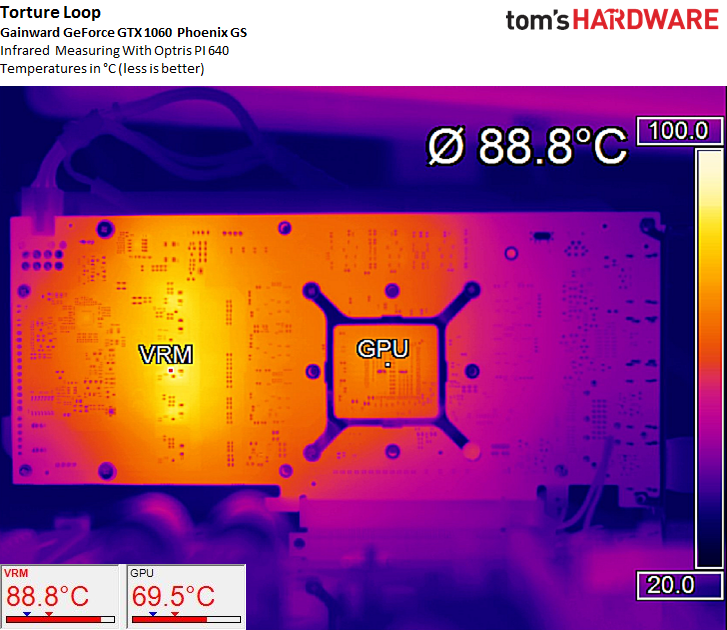
Cooling is therefore acceptable, even if one notes the solution that at least one accountant may have sat next to each engineer.
Noise
Hysteresis is not an issue for many manufacturers. However, Gainward also uses a fan curve here, the initial value of which is too low after the power-on pulse during the transition from passive to active mode, because the fans simply stop due to their specifications and then have to be pushed again . Even the best hysteris is of no use if one mercilessly overestimates one's own components.
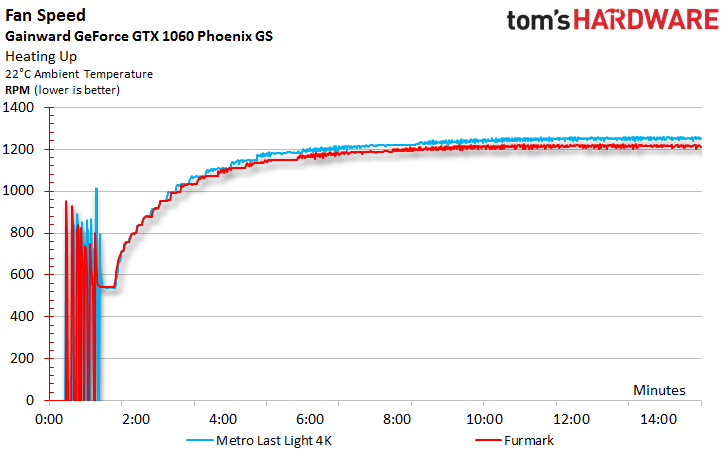
Due to the semi-passive mode, the noise in the idle is not measurable anyway, so we have completely dispensed with this one measurement.
The noise level 35.6 db(A) is acceptable, but also not a peak value. The fact that you have to move so much air is due to the cooler (see above), which does not work as efficiently as it might possibly be with a few euros more material. The rest is rather inconspicuous – and it is positive to notice that low-frequency storage noises are almost completely missing. So it remains rather a noise, which can be swallowed better by the housing (insulation).
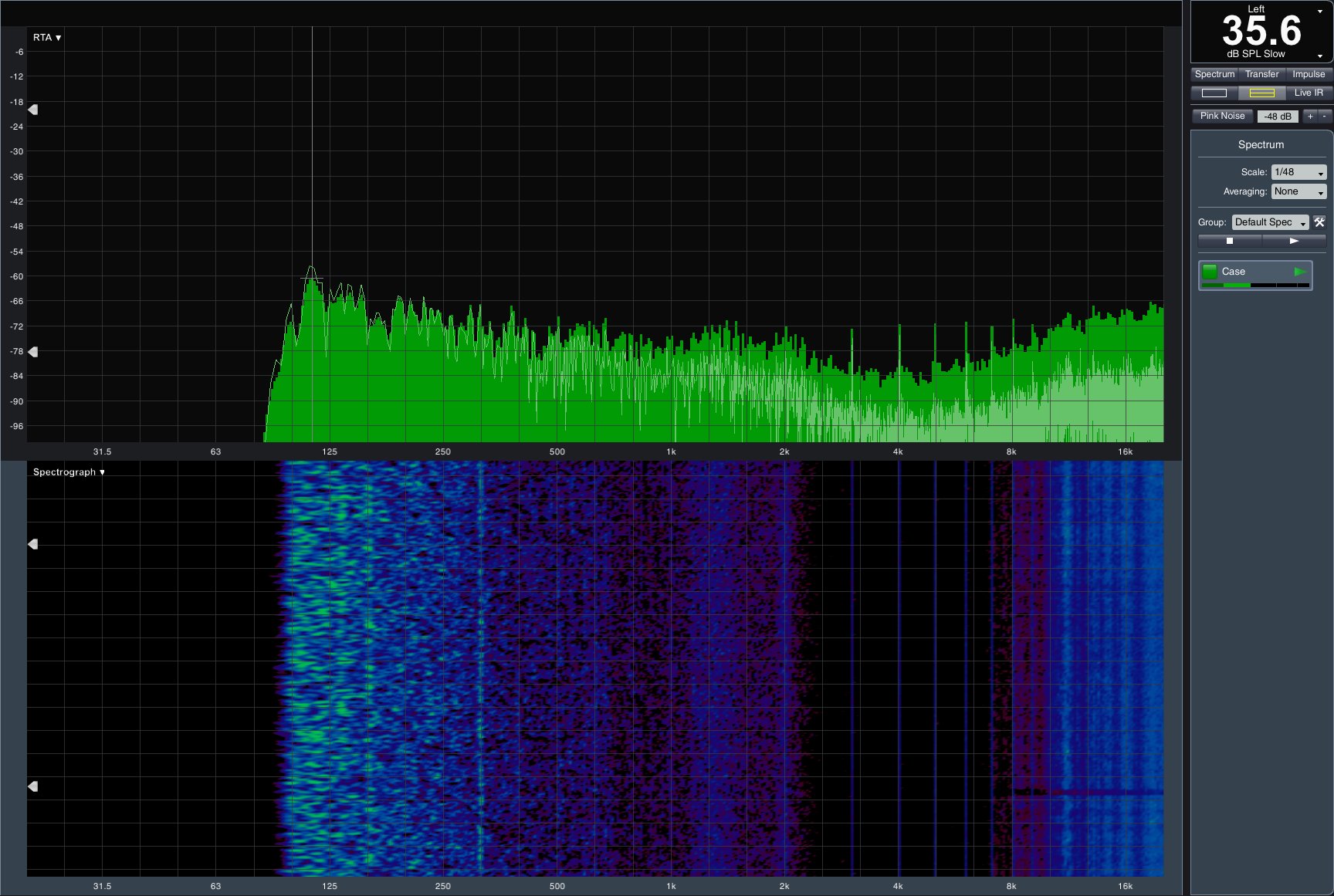
Technical data and interim conclusion
Let's take a look at the technical data and individual details of the graphics card:
- 1 - Einführung und Übersicht
- 2 - EVGA GeForce GTX 1060 Superclocked
- 3 - Gainward GeForce GTX 1060 Phoenix GS
- 4 - Gigabyte GeForce GTX 1060 G1 Gaming
- 5 - inno3D GeForce GTX 1060 Gaming OC
- 6 - MSI GeForce GTX 1060 Gaming X 3G
- 7 - MSI GeForce GTX 1060 Gaming X 6G
- 8 - Nvidia GeForce GTX 1060 Founders Edition
- 9 - Palit GeForce GTX 1060 SuperJetstream
- 10 - [Neu] PNY GeForce GTX 1060 XLR8 OC Gaming
- 11 - Vergleich der Gaming-Performance
- 12 - Vergleich vom Temperatur, Lautstärke und Leistungsaufnahme
- 13 - Vergleichende Zusammenfassung und Fazit

































Kommentieren